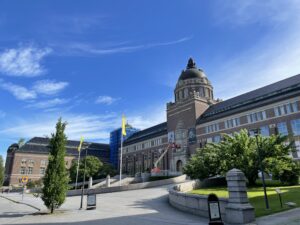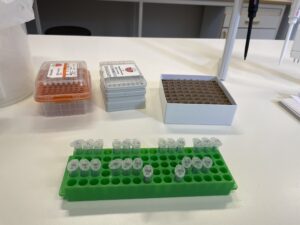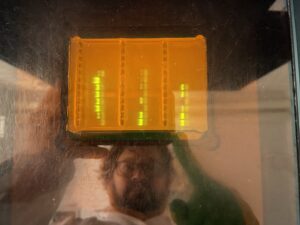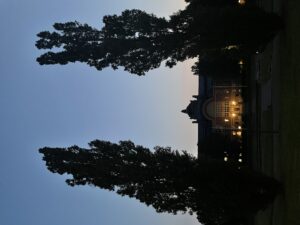Historical? Me? No, actually not. But I’ve spent a lovely (though insanely intense*) time at the Swedish Museum of Natural History, working with historic DNA.
 Most bird specimens in museum collections are prepared as study skins, i.e. they look like birds lying flat on their back. In order to obtain a tissue sample for DNA extraction, while causing minimal damage to the specimen, the most common method is to cut thin scrapes of dermal tissue from a toepad. For my EU-funded FLIGHTLOSS project, I have obtained such samples from several rail species, and additionally I have processed other samples for some exciting side projects.
Most bird specimens in museum collections are prepared as study skins, i.e. they look like birds lying flat on their back. In order to obtain a tissue sample for DNA extraction, while causing minimal damage to the specimen, the most common method is to cut thin scrapes of dermal tissue from a toepad. For my EU-funded FLIGHTLOSS project, I have obtained such samples from several rail species, and additionally I have processed other samples for some exciting side projects.
 Under the guidance of Dr. Martin Irestedt, I have learnt to implement the local flavor of best practices and protocols for work with toepad samples. In short, in a clean lab (protected from the contamination of DNA from any modern source) I have extracted DNA. Unlike from fresh tissue, the DNA in historic specimens is degraded and broken up in small fragments. I have sorted out fragments of an appropriate length and turned them into libraries, which will be sequenced on an Illumina Novaseq, which spits out millions and millions of sequence reads. These can then be stitched together against the reference genome of a closely related species.
Under the guidance of Dr. Martin Irestedt, I have learnt to implement the local flavor of best practices and protocols for work with toepad samples. In short, in a clean lab (protected from the contamination of DNA from any modern source) I have extracted DNA. Unlike from fresh tissue, the DNA in historic specimens is degraded and broken up in small fragments. I have sorted out fragments of an appropriate length and turned them into libraries, which will be sequenced on an Illumina Novaseq, which spits out millions and millions of sequence reads. These can then be stitched together against the reference genome of a closely related species.
 All in all, the visit was very successful, and I managed to create sequencing libraries from 48 out of 49 samples. Working with historical samples, there’s always a bit of randomness included, and usually one would expect more than one sample out of fifty to fail, so I am stoked! I am extra happy and proud to have successfully extracted DNA from an extinct parakeet, which was collected in the 1770 on one of Captain Cook’s journeys.
All in all, the visit was very successful, and I managed to create sequencing libraries from 48 out of 49 samples. Working with historical samples, there’s always a bit of randomness included, and usually one would expect more than one sample out of fifty to fail, so I am stoked! I am extra happy and proud to have successfully extracted DNA from an extinct parakeet, which was collected in the 1770 on one of Captain Cook’s journeys.
 *The bulk of my samples were sent by courier from the UK and should have arrived before me. Instead, the courier screwed up, and I spent days waiting for the samples to arrive. But I couldn’t just reschedule my trip back, so let’s just say I din’t see much more than the lab in Stockholm.
*The bulk of my samples were sent by courier from the UK and should have arrived before me. Instead, the courier screwed up, and I spent days waiting for the samples to arrive. But I couldn’t just reschedule my trip back, so let’s just say I din’t see much more than the lab in Stockholm.
